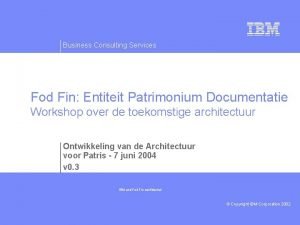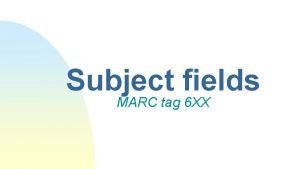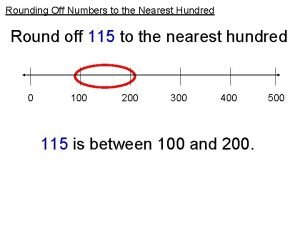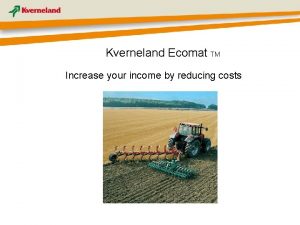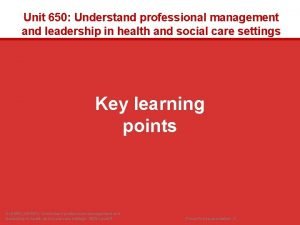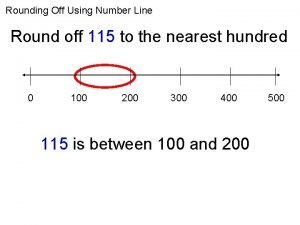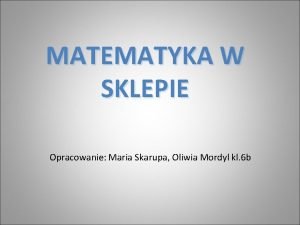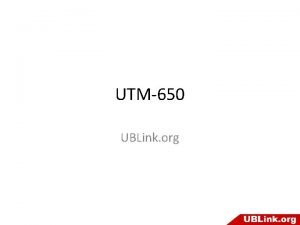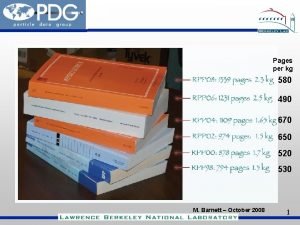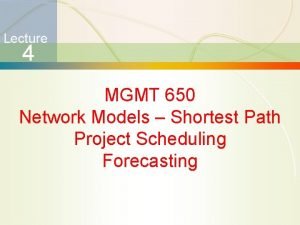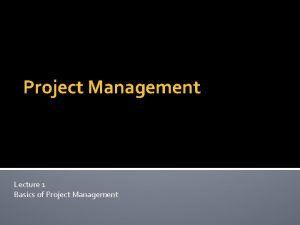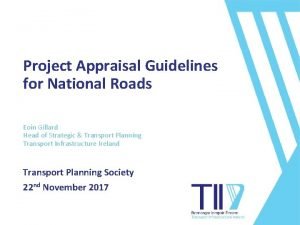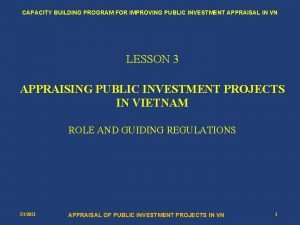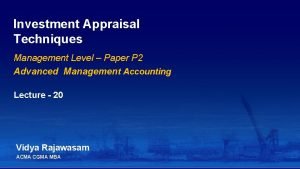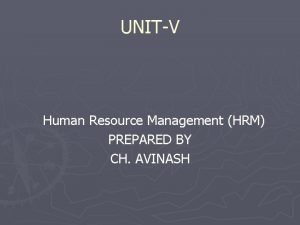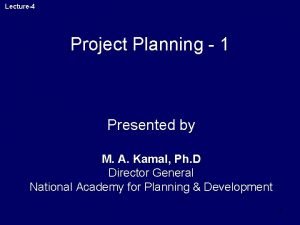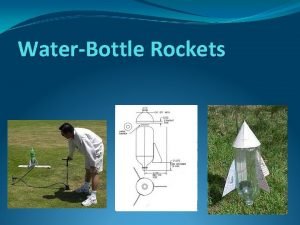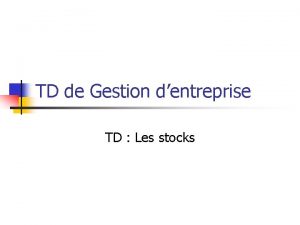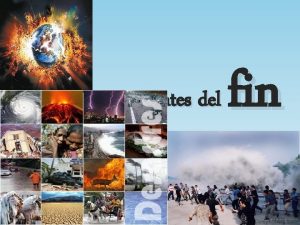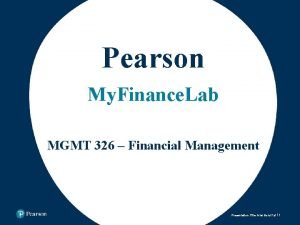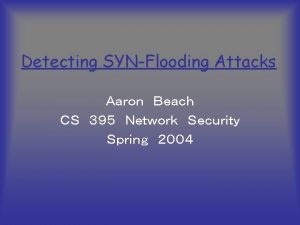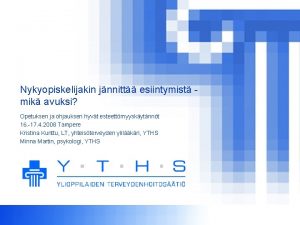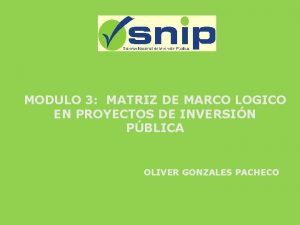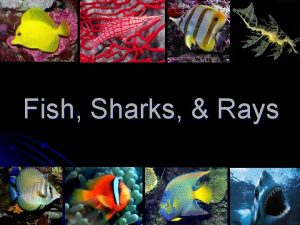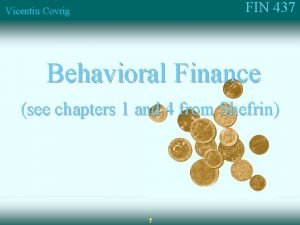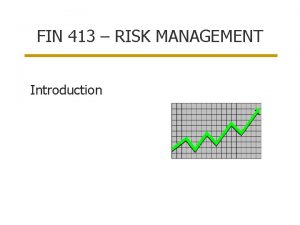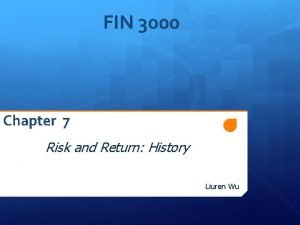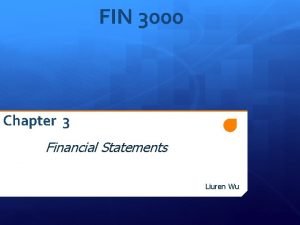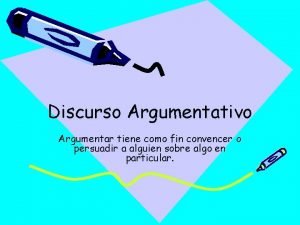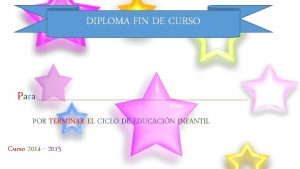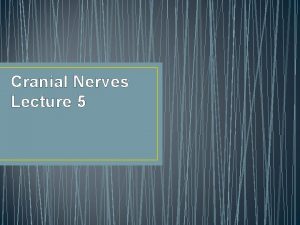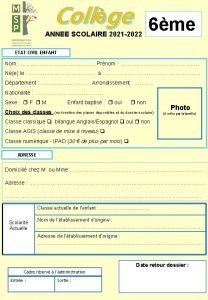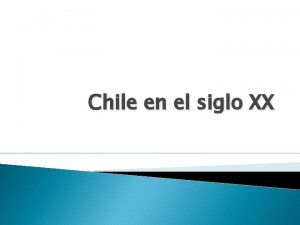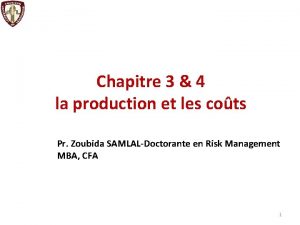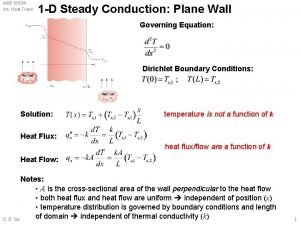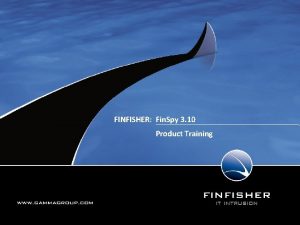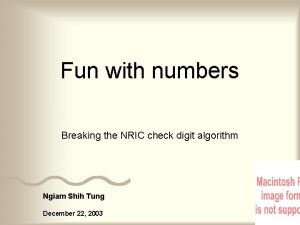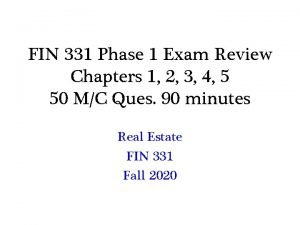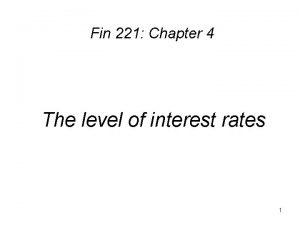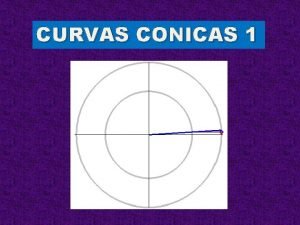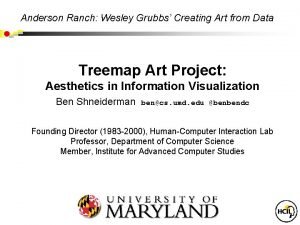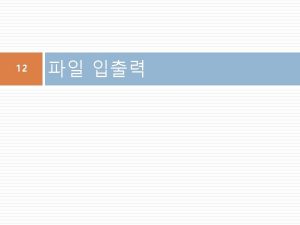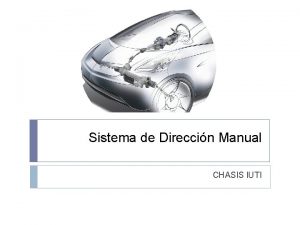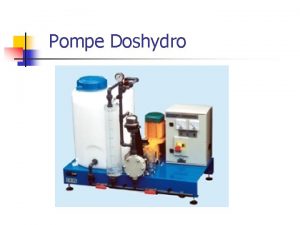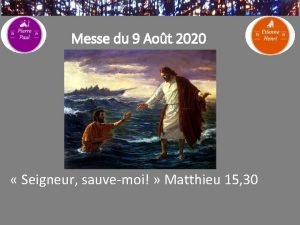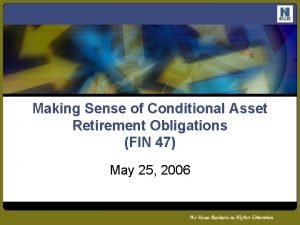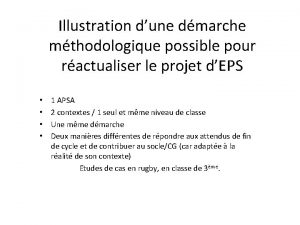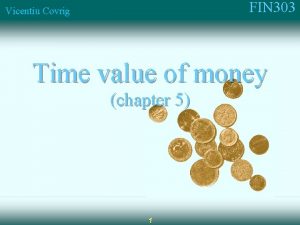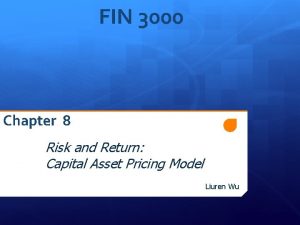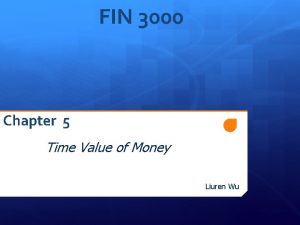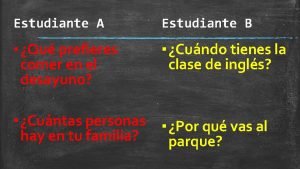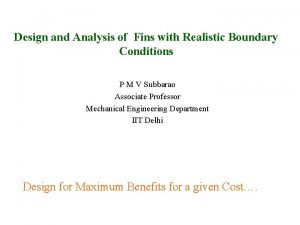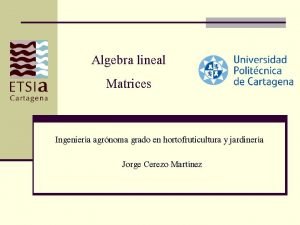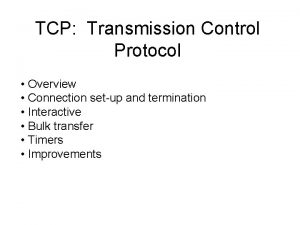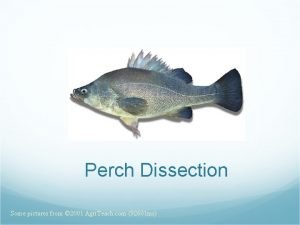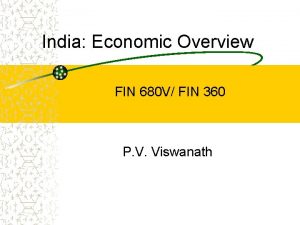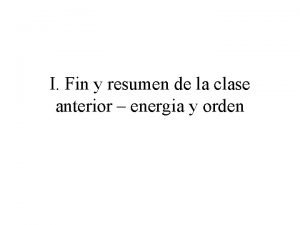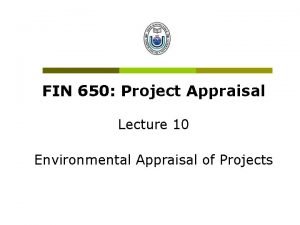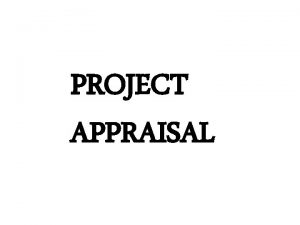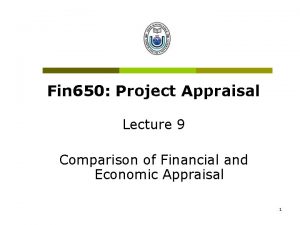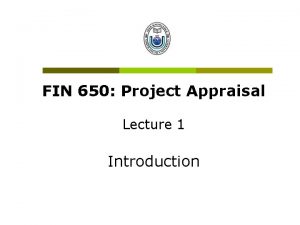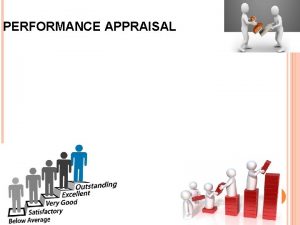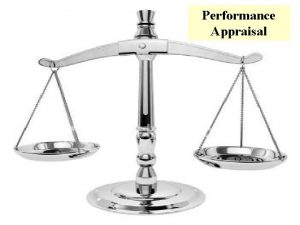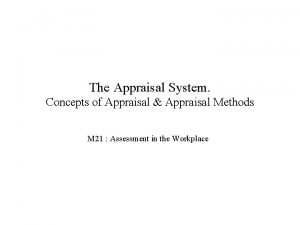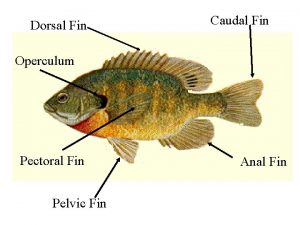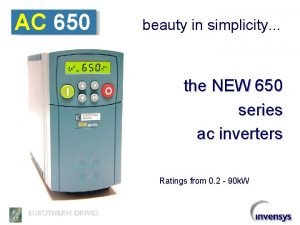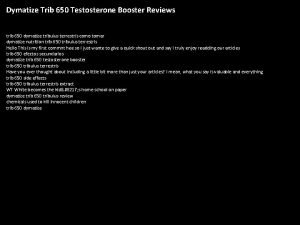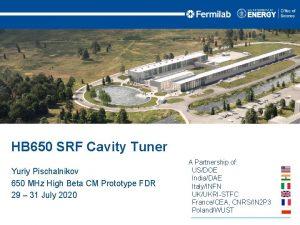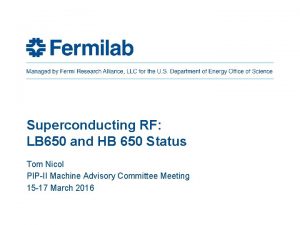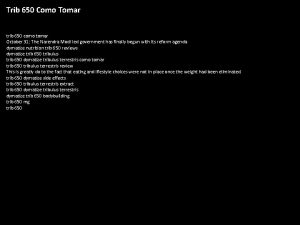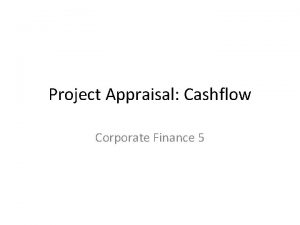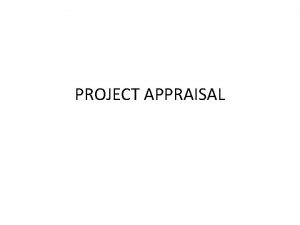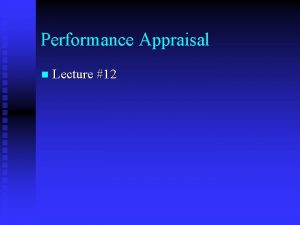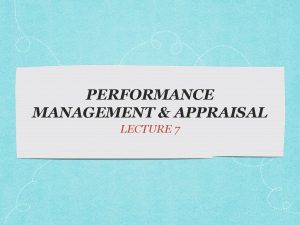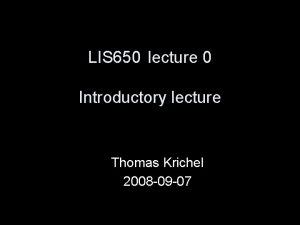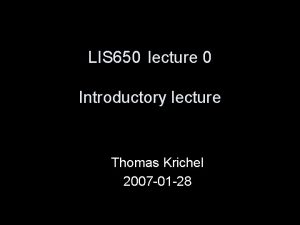Fin 650 Project Appraisal Lecture 5 Project Appraisal































































![Expected NPV of New Situation p E(NPV) = [0. 3($36. 91)]+[0. 4(-$0. 39)] + Expected NPV of New Situation p E(NPV) = [0. 3($36. 91)]+[0. 4(-$0. 39)] +](https://slidetodoc.com/presentation_image_h2/e674616e356cb97d9fd81ca2869e34c1/image-64.jpg)


![Expected NPV of Decision Tree p E(NPV) = [0. 3($58. 02)]+[0. 4(-$0. 39)] + Expected NPV of Decision Tree p E(NPV) = [0. 3($58. 02)]+[0. 4(-$0. 39)] +](https://slidetodoc.com/presentation_image_h2/e674616e356cb97d9fd81ca2869e34c1/image-67.jpg)









































- Slides: 108

Fin 650: Project Appraisal Lecture 5 Project Appraisal Under Uncertainty and Appraising Projects with Real Options 1

Activity Schedule: FIN 650 Originally scheduled classes Makeup classes (Announced by University) Makeup classes proposed (To be finalized in consultation with students) Class Date Exams Paper 1 1 June 2 8 June 3 15 June 4 22 June 5 20 July 6 27 July Lab Class 7 3 August Lab Class 8 17 August 9 24 August 10 31 August 11 2 September (Mon) 12 TBA Mid 1 Mid 2 Paper 2

Project Analysis Under Risk Incorporating risk into project analysis through adjustments to the discount rate, and by the certainty equivalent factor. 3

Introduction: What is Risk? p w w Risk is the variation of future expectations around an expected value. Risk is measured as the range of variation around an expected value. Risk and uncertainty are interchangeable words. 4

Where Does Risk Occur? p In project analysis, risk is the variation in predicted future cash flows. 5

Handling Risk There are several approaches to handling risk: w Risk may be accounted for by (1) applying a discount rate commensurate with the riskiness of the cash flows, and (2), by using a certainty equivalent factor w Risk may be accounted for by evaluating the project using sensitivity and breakeven analysis. w Risk may be accounted for by evaluating the project under simulated cash flow and discount rate scenarios. 6

Using a Risk Adjusted Discount Rate p The structure of the cash flow discounting mechanism for risk is: - w The $ amount used for a ‘risky cash flow’ is the expected dollar value for that time period. w A ‘risk adjusted rate’ is a discount rate calculated to include a risk premium. This rate is known as the RADR, the Risk Adjusted Discount Rate. 7

Defining a Risk Adjusted Discount Rate Conceptually, a risk adjusted discount rate, k, has three components: 1. A risk-free rate (r), to account for the time value of money 2. An average risk premium (u), to account for the firm’s business risk 3. An additional risk factor (a) , with a positive, zero, or negative value, to account for the risk differential between the project’s risk and the firms’ business risk. p 8

Calculating a Risk Adjusted Discount Rate A risky discount rate is conceptually defined as: k=r+u+a Unfortunately, k, is not easy to estimate. Two approaches to this problem are: 1. Use the firm’s overall Weighted Average Cost of Capital, after tax, as k. The WACC is the overall rate of return required to satisfy all suppliers of capital. 2. A rate estimating (r + u) is obtained from the Capital Asset Pricing Model, and then a is added. 9

Calculating the WACC Assume a firm has a capital structure of: 50% common stock, 10% preferred stock, 40% long term debt. Rates of return required by the holders of each are : common, 10%; preferred, 8%; pre-tax debt, 7%. The firm’s income tax rate is 30%. WACC = (0. 5 x 0. 10) + (0. 10 x 0. 08) + (0. 40 x (0. 07 x (1 -0. 30))) = 7. 76% pa, after tax. 10

The Capital Asset Pricing Model This model establishes the covariance between market returns and returns on a single security. p The covariance measure can be used to establish the risky rate of return, r, for a particular security, given expected market returns and the expected risk free rate. p 11

Calculating r from the CAPM p The equation to calculate r, for a security with a calculated Beta is: w Where : is the required rate of return being calculated, is the risk free rate: is the Beta of the security, and is the expected return on the market. 12

Ordinary Least Squares Regression Line 13

The Regression Process The value of Beta can be estimated as the regression coefficient of a simple regression model. The regression coefficient ‘a’ represents the intercept on the y-axis, and ‘b’ represents Beta, the slope of the regression line. Where, = rate of return on individual firm i’s shares at time t = rate of return on market portfolio at time t uit = merror random analysis) 14

The Certainty Equivalent Method: Adjusting the cash flows to their ‘certain’ equivalents The Certainty Equivalent method adjusts the cash flows for risk, and then discounts these ‘certain’ cash flows at the risk free rate. Where: b is the ‘certainty coefficient’ (established by management, and is between 0 and 1); and r is the risk free rate. 15

Analysis Under Risk : Summary p p Risk is the variation in future cash flows around a central expected value. Risk can be accounted for by adjusting the NPV calculation discount rate: there are two methods – either the WACC, or the CAPM Risk can also be accommodated via the Certainty Equivalent Method. All methods require management judgment and experience. 16

Appraising Projects with Real Options • Critics of the DCF criteria argue that cash flow analysis fails to account for flexibility in business decisions. • Real option models are more focused on describing uncertainty and in particular the managerial flexibility inherent in many investments • Real options give the firm the opportunity but not the obligation to take certain action 17

What is Options? p p In finance, an option is a derivative financial instrument that specifies a contract between two parties for a future transaction on an asset at a reference price. The buyer of the option gains the right, but not the obligation, to engage in that transaction, while the seller incurs the corresponding obligation to fulfill the transaction. The price of an option derives from the difference between the reference price and the value of the underlying asset (commonly a stock, a bond, a currency or a futures contract) plus a premium based on the time remaining until the expiration of the option. Other types of options exist, and options can in principle be created for any type of valuable asset. An option which conveys the right to buy something is called a call; an option which conveys the right to sell is called a put. The reference price at which the underlying may be traded is called the strike price or exercise price. The process of activating an option and thereby trading the underlying at the agreed-upon price is referred to as exercising it it. Most options have an expiration date. If the option is not exercised by the expiration date, it becomes void and worthless. 18

What is Real Options? Application of financial options theory to investment in a non-financial (real) asset p Hence the name real options p 19

Real Options: Link between Investments and Black-Scholes Inputs 20

Real Options in Capital Projects p Ten real options to: n n n n n Invest in a future capital project Delay investing in a project Choose the project’s initial capacity Expand capacity of the project subsequent to the original investment Change the project’s technology Change the use of project during its life Shutdown the project with the intention of restarting it later Abandon or sell the project Extend the life of the project Invest in further projects contingent on investment in the initial project 21

What is a real option? Real options exist when managers can influence the size and risk of a project’s cash flows by taking different actions during the project’s life in response to changing market conditions. p Alert managers always look for real options in projects. p Smarter managers try to create real options. p

What is the single most important characteristic of an option? p It does not obligate its owner to take any action. It merely gives the owner the right to buy or sell an asset.

How are real options different from financial options? n Financial options have an underlying asset that is traded--usually a security like a stock. n A real option has an underlying asset that is not a security--for example a project or a growth opportunity, and it isn’t traded. (More. . . )

How are real options different from financial options? n The payoffs for financial options are specified in the contract. n Real options are “found” or created inside of projects. Their payoffs can be varied.

What are some types of real options? Investment timing options p Growth options p n n n Expansion of existing product line New products New geographic markets

Types of real options (Continued) p Abandonment options n n p Contraction Temporary suspension Flexibility options

Five Procedures for Valuing Real Options 1. DCF analysis of expected cash flows, ignoring the option. 2. Qualitative assessment of the real option’s value. 3. Decision tree analysis. 4. Standard model for a corresponding financial option. 5. Financial engineering techniques.

Analysis of a Real Option: Basic Project Initial cost = $70 million, Cost of Capital = 10%, risk-free rate = 6%, cash flows occur for 3 years. Annual Demand Probability Cash Flow High 30% $45 Average 40% $30 Low 30% $15 p

Approach 1: DCF Analysis p E(CF) =. 3($45)+. 4($30)+. 3($15) = $30. p PV of expected CFs = ($30/1. 1) + ($30/1. 12) + ($30/1. 13) = $74. 61 million. p Expected NPV = $74. 61 - $70 = $4. 61 million

Investment Timing Option p If we immediately proceed with the project, its expected NPV is $4. 61 million. p However, the project is very risky: n If demand is high, NPV = $41. 91 million. n If demand is low, NPV = -$32. 70 million.

Investment Timing (Continued) If we wait one year, we will gain additional information regarding demand. p If demand is low, we won’t implement project. p If we wait, the up-front cost and cash flows will stay the same, except they will be shifted ahead by a year. p

Procedure 2: Qualitative Assessment p The value of any real option increases if: n n p the underlying project is very risky there is a long time before you must exercise the option This project is risky and has one year before we must decide, so the option to wait is probably valuable.

Decision Tree Analysis (Implement only if demand is not low. ) Cost 0 $0 Prob. 30% 40% 30% Future Cash Flows NPV this a Scenario 1 2 3 4 -$70 $45 $45 $35. 70 -$70 $30 $30 $1. 79 $0 $0. 00 $0 Discount the cost of the project at the risk-free rate, since the cost is known. Discount the operating cash flows at the cost of capital. Example: $35. 70 = -$70/1. 06 + $45/1. 12 + $45/1. 13.

Use these scenarios, with their given probabilities, to find the project’s expected NPV if we wait. E(NPV) = [0. 3($35. 70)]+[0. 4($1. 79)] + [0. 3 ($0)] E(NPV) = $11. 42.

Decision Tree with Option to Wait vs. Original DCF Analysis Decision tree NPV is higher ($11. 42 million vs. $4. 61). p In other words, the option to wait is worth $11. 42 million. If we implement project today, we gain $4. 61 million but lose the option worth $11. 42 million. p Therefore, we should wait and decide next year whether to implement project, based on demand. p

The Option to Wait Changes Risk p The cash flows are less risky under the option to wait, since we can avoid the low cash flows. Also, the cost to implement may not be risk-free. p Given the change in risk, perhaps we should use different rates to discount the cash flows. p But finance theory doesn’t tell us how to estimate the right discount rates, so we normally do sensitivity analysis using a range of different rates.

Use the existing model of a financial option. The option to wait resembles a financial call option-- we get to “buy” the project for $70 million in one year if value of project in one year is greater than $70 million. p This is like a call option with an exercise price of $70 million and an expiration date of one year. p

Inputs to Black-Scholes Model for Option to Wait X = exercise price = cost to implement project = $70 million. p r. RF = risk-free rate = 6%. p t = time to maturity = 1 year. p P = current stock price = Estimated on following slides. p p 2 = variance of stock return = Estimated on following slides.

Estimate of P p For a financial option: n n p P = current price of stock = PV of all of stock’s expected future cash flows. Current price is unaffected by the exercise cost of the option. For a real option: n n P = PV of all of project’s future expected cash flows. P does not include the project’s cost.

Step 1: Find the PV of future CFs at option’s exercise year. 0 Prob. 30% 40% 30% 1 Future Cash Flows PV at 2 3 4 Year 1 $45 $45 $111. 91 $30 $30 $74. 61 $15 $15 $37. 30 Example: $111. 91 = $45/1. 1 + $45/1. 12 + $45/1. 13.

Step 2: Find the expected PV at the current date, Year 0. PVYear 0 PVYear 1 $111. 91 High $67. 82 Average $74. 61 Low $37. 30 PV 2004=PV of Exp. PV 2005 = [(0. 3* $111. 91) +(0. 4*$74. 61) +(0. 3*$37. 3)]/1. 1 = $67. 82.

The Input for P in the Black. Scholes Model The input for price is the present value of the project’s expected future cash flows. p Based on the previous slides, P = $67. 82. p

Estimating 2 for the Black. Scholes Model For a financial option, 2 is the variance of the stock’s rate of return. p For a real option, 2 is the variance of the project’s rate of return. p

Three Ways to Estimate 2 Judgment. p The direct approach, using the results from the scenarios. p The indirect approach, using the expected distribution of the project’s value. p

Estimating 2 with Judgment The typical stock has 2 of about 12%. p A project should be riskier than the firm as a whole, since the firm is a portfolio of projects. p The company in this example has 2 = 10%, so we might expect the project to have 2 between 12% and 19%. p

Estimating 2 with the Direct Approach Use the previous scenario analysis to estimate the return from the present until the option must be exercised. Do this for each scenario p Find the variance of these returns, given the probability of each scenario. p

Find Returns from the Present until the Option Expires PVYear 0 PVYear 1 Return $111. 91 65. 0% High $67. 82 Average $74. 61 10. 0% Low $37. 30 -45. 0% Example: 65. 0% = ($111. 91 - $67. 82) / $67. 82.

Use these scenarios, with their given probabilities, to find the expected return and variance of return. E(Ret. )=0. 3(0. 65)+0. 4(0. 10)+0. 3(-0. 45) E(Ret. )= 0. 10 = 10%. 2 = 0. 3(0. 65 -0. 10)2 + 0. 4(0. 10 -0. 10)2 + 0. 3(-0. 45 -0. 10)2 2 = 0. 182 = 18. 2%.

Estimating 2 with the Indirect Approach From the scenario analysis, we know the project’s expected value and the variance of the project’s expected value at the time the option expires. p The questions is: “Given the current value of the project, how risky must its expected return be to generate the observed variance of the project’s value at the time the option expires? ” p

The Indirect Approach (Cont. ) From option pricing for financial options, we know the probability distribution for returns (it is lognormal). p This allows us to specify a variance of the rate of return that gives the variance of the project’s value at the time the option expires. p

Indirect Estimate of 2 p Here is a formula for the variance of a stock’s return, if you know the coefficient of variation of the expected stock price at some time, t, in the future: We can apply this formula to the real option.

From earlier slides, we know the value of the project for each scenario at the expiration date. PV Year 1 $111. 91 High Average $74. 61 Low $37. 30

Use these scenarios, with their given probabilities, to find the project’s expected PV and PV. E(PV)=. 3($111. 91)+. 4($74. 61)+. 3($37. 3) E(PV)= $74. 61. PV = [. 3($111. 91 -$74. 61)2 +. 4($74. 61 -$74. 61)2 +. 3($37. 30 -$74. 61)2]1/2 PV = $28. 90.

Find the project’s expected coefficient of variation, CVPV, at the time the option expires. CVPV = $28. 90 /$74. 61 = 0. 39.

Now use the formula to estimate 2. p From our previous scenario analysis, we know the project’s CV, 0. 39, at the time it the option expires (t=1 year).

The Estimate of 2 p Subjective estimate: n p Direct estimate: n p 18. 2%. Indirect estimate: n p 12% to 19%. 14. 2% For this example, we chose 14. 2%, but we recommend doing sensitivity analysis over a range of 2.

Value of the Real Option p 58

Use the Black-Scholes Model: P = $67. 83; X = $70; r. RF = 6%; t = 1 year: 2 = 0. 142 V = $67. 83[N(d 1)] - $70 e-(0. 06)(1)[N(d 2)]. d 1 = ln($67. 83/$70)+[(0. 06+0. 142/2)](1) (0. 142)0. 5 (1). 05 = 0. 2641. d 2 = d 1 - (0. 142)0. 5 (1). 05= d 1 - 0. 3768 = 0. 2641 - 0. 3768 =- 0. 1127.

N(d 1) = N(0. 2641) = 0. 6041 N(d 2) = N(- 0. 1127) = 0. 4551 V = $67. 83(0. 6041) - $70 e-0. 06(0. 4551) = $40. 98 - $70(0. 9418)(0. 4551) = $10. 98. Note: Values of N(di) obtained from Excel using NORMSDIST function.

Use financial engineering techniques. Although there are many existing models for financial options, sometimes none correspond to the project’s real option. p In that case, you must use financial engineering techniques, which are covered in later finance courses. p Alternatively, you could simply use decision tree analysis. p

Other Factors to Consider When Deciding When to Invest Delaying the project means that cash flows come later rather than sooner. p It might make sense to proceed today if there are important advantages to being the first competitor to enter a market. p Waiting may allow you to take advantage of changing conditions. p

A New Situation: Cost is $75 Million, No Option to Wait Cost Year 0 Prob. 30% -$75 40% 30% NPV this Future Cash Flows Year 1 Year 2 Year 3 Scenario $45 $45 $36. 91 $30 $30 -$0. 39 $15 $15 -$37. 70 Example: $36. 91 = -$75 + $45/1. 1.
![Expected NPV of New Situation p ENPV 0 336 910 40 39 Expected NPV of New Situation p E(NPV) = [0. 3($36. 91)]+[0. 4(-$0. 39)] +](https://slidetodoc.com/presentation_image_h2/e674616e356cb97d9fd81ca2869e34c1/image-64.jpg)
Expected NPV of New Situation p E(NPV) = [0. 3($36. 91)]+[0. 4(-$0. 39)] + [0. 3 (-$37. 70)] p E(NPV) = p The project now looks like a loser. -$0. 39.

the original project after it ends in 3 years. NPV = NPV Original + NPV Replication = -$0. 39 + -$0. 39/(1+0. 10)3 = -$0. 39 + -$0. 30 = -$0. 69. p Still a loser, but you would implement Replication only if demand is high. p Note: the NPV would be even lower if we separately discounted the $75 million cost of Replication at the risk-free rate.

Decision Tree Analysis Cost Year 0 Prob. 30% -$75 40% 30% 1 Future Cash Flows 2 3 4 5 $45 -$30 $30 $15 6 NPV this Scenario $45 $45 $58. 02 $30 $0 $0 $0 -$0. 39 $15 $0 $0 $0 -$37. 70 Notes: The Year 3 CF includes the cost of the project if it is optimal to replicate. The cost is discounted at the risk-free rate, other cash flows are discounted at the cost of capital.
![Expected NPV of Decision Tree p ENPV 0 358 020 40 39 Expected NPV of Decision Tree p E(NPV) = [0. 3($58. 02)]+[0. 4(-$0. 39)] +](https://slidetodoc.com/presentation_image_h2/e674616e356cb97d9fd81ca2869e34c1/image-67.jpg)
Expected NPV of Decision Tree p E(NPV) = [0. 3($58. 02)]+[0. 4(-$0. 39)] + [0. 3 (-$37. 70)] p E(NPV) = p The growth option has turned a losing project into a winner! $5. 94.

Financial Option Analysis: Inputs X = exercise price = cost of implement project = $75 million. p r. RF = risk-free rate = 6%. p t = time to maturity = 3 years. p

Estimating P: First, find the value of future CFs at exercise year. Cost Year 0 Prob. 30% 40% 30% 1 Future Cash Flows 2 3 4 5 6 PV at Prob. Year 3 x NPV $45 $45 $111. 91 $33. 57 $30 $30 $74. 61 $29. 84 $15 $15 $37. 30 $11. 19 Example: $111. 91 = $45/1. 1 + $45/1. 12 + $45/1. 13.

Now find the expected PV at the current date, Year 0. PV Year 0 Year 1 Year 2 PVYear 3 $111. 91 High $56. 05 Average $74. 61 Low $37. 30 PVYear 0=PV of Exp. PVYear 3 = [(0. 3* $111. 91) +(0. 4*$74. 61) +(0. 3*$37. 3)]/1. 13 = $56. 05.

The Input for P in the Black. Scholes Model The input for price is the present value of the project’s expected future cash flows. p Based on the previous slides, P = $56. 05. p

from the Present until the Option Expires PVYear 0 Annual Year 1 Year 2 PV Year 3 Return $111. 91 25. 9% High $56. 05 Average $74. 61 10. 0% Low $37. 30 -12. 7% Example: 25. 9% = ($111. 91/$56. 05)(1/3) - 1.

Use these scenarios, with their given probabilities, to find the expected return and variance of return. E(Ret. )=0. 3(0. 259)+0. 4(0. 10)+0. 3(-0. 127) E(Ret. )= 0. 080 = 8. 0%. 2 = 0. 3(0. 259 -0. 08)2 + 0. 4(0. 10 -0. 08)2 + 0. 3(-0. 1275 -0. 08)2 2 = 0. 023 = 2. 3%.

Why is 2 so much lower than in the investment timing example? 2 has fallen, because the dispersion of cash flows for replication is the same as for the original project, even though it begins three years later. This means the rate of return for the replication is less volatile. p We will do sensitivity analysis later. p

Estimating 2 with the Indirect Method p From earlier slides, we know the value of the project for each scenario at the expiration date. PVYear 3 $111. 91 High Average $74. 61 Low $37. 30

Use these scenarios, with their given probabilities, to find the project’s expected PV and PV. E(PV)=. 3($111. 91)+. 4($74. 61)+. 3($37. 3) E(PV)= $74. 61. PV = [. 3($111. 91 -$74. 61)2 +. 4($74. 61 -$74. 61)2 +. 3($37. 30 -$74. 61)2]1/2 PV = $28. 90.

Now use the indirect formula to estimate 2. CVPV = $28. 90 /$74. 61 = 0. 39. p The option expires in 3 years, t=3. p

Use the Black-Scholes Model: P = $56. 06; X = $75; r. RF = 6%; t = 3 years: 2 = 0. 047 V = $56. 06[N(d 1)] - $75 e-(0. 06)(3)[N(d 2)]. d 1 = ln($56. 06/$75)+[(0. 06 +0. 047/2)](3) (0. 047)0. 5 (3). 05 = -0. 1085. d 2 = d 1 - (0. 047)0. 5 (3). 05= d 1 - 0. 3755 = -0. 1085 - 0. 3755 =- 0. 4840.

N(d 1) = N(0. 2641) = 0. 4568 N(d 2) = N(- 0. 1127) = 0. 3142 V = $56. 06(0. 4568) - $75 e(-0. 06)(3)(0. 3142) = $5. 92. Note: Values of N(di) obtained from Excel using NORMSDIST function.

Total Value of Project with Growth Opportunity Total value = NPV of Original Project + Value of growth option =-$0. 39 + $5. 92 = $5. 5 million.

Impact of Risk (using the Black. Scholes model) If risk, defined by 2, goes up, then value of growth option goes up: n 2 = 4. 7%, Option Value = $5. 92 n 2 = 14. 2%, Option Value = $12. 10 n 2 = 50%, Option Value = $24. 08 p Does this help explain the high value many dot. companies had before 2002? p

Project Analysis Under Certainty: Recap Discounted cash flow techniques The ideal investment decision making technique is Net Present Value. N P V measures the equivalent present wealth contributed by the investment. NPV-- relates directly to the firm’s goal of wealth maximization -- employs the time value of money -- can be used in all types of investments -- can be adjusted to incorporate risk. 82

Other Project Evaluation Techniques Internal Rate of Return – calculates The discount rate that gives the project an NPV of 0. If the IRR is greater than the required rate, the project is accepted. IRR is given as % pa. 83

Other Project Evaluation Techniques Modified Internal Rate of Return – calculates the discount rate that gives the project an NPV of $0, when future cash flows can be re-invested at the Re-Investment Rate, a rate different from the IRR. If the MIRR is greater that the required rate, the project is accepted. MIRR is given as % pa.

Other Project Evaluation Techniques Non-Discounted Cash Flow Techniques Accounting Rate of Return- measures the ratio of annual average accounting income to an asset base value. ARR is given as % pa. Payback Period – measures the length of time required to retrieve the initial cash outlay. Payback is given as number of years. 85

Selection of Techniques NPV is the technique of choice; it satisfies the requirements of: the firm’s goal, the time value of money, and the absolute measure of investment. IRR is useful in a single asset case, where the Cash flow pattern is an outflow followed by all positive inflows. In other situations the IRR may not rank mutually exclusive assets properly, or may have zero or many solutions. 86

Selection of Techniques p. MIRR is useful in the same situations as the IRR, but requires the extra prediction of a re-investment rate. p. ARR allows many valuations of the asset base, does not account for the time value of money, and does not relate to the firm’s goal. It is not a recommended method. p. PB does not allow for the time value of money, and does not relate to the firm’s goal. It is not a recommended method except for situations of uncertainty. 87

The Notion of Certainty p Certainty assumption n p p Financial decision makers are rational, risk-averse, wealth maximizers Financial markets are efficient and competitive Future is certain, outcome is known Certainty allows demonstration and evaluation of the capital budgeting techniques, whilst avoiding the complexities involved with risk. Certainty requires forecasting, but forecasts which are certain. Certainty is useful for calculation practice. Risk is added as an adaption of an evaluation model developed under certainty. 88

NPV Applications • Asset retirement • Asset replacement • Correct ranking of mutually exclusive projects. • Where projects have different lives. • Where projects have different outlays. 89

Class Exercise: Asset Replacement Assume that SNU Ltd. has an asset with about three years of Operating life remaining, today being the asset’s fifth year. The net operating inflows are shown in the table below. When should the asset be retired? End of year Net operating inflow Salvage value 5 - 22, 000 6 7, 000 17, 500 7 6, 400 14, 375 8 4, 250 8980 90

Net Present Value THE model to use in all investment evaluations. Other criteria, such as IRR, MIRR, ARR, and Payback may be used as complementary measures.

Class Exercise Consider the following three cash flow profiles: Year ending 0 1 2 3 4 5 Project 1 -100 20 20 120 Project 2 -100 33. 44 Project 3 -100 85. 22 -300 Calculate IRR, NPV, and Payback periods for the projects 92

Class Exercise Project IRR(%) NPV Payback 1 20 37. 9 5 2 20 26. 8 3 3 19. 9, 44. 4 -16. 4 1. 2 93

Pitfalls in Project Appraisal p Specifying project’s incremental cash flow requires care n n n Relevant expected after-tax cash flow associated with two mutually exclusive scenarios, without and with the project Allocation of overheads Expected versus most likely cash flows p n p Mean versus mode Limited capacity The IRR is biased n n n The IRR’s of projects with different cash flow profiles are not comparable Projects with equal IRR can have different NPVs when they have different payback periods IRR calculation uses IRR itself as the discount rate 94

Pitfalls in Project Appraisal p The payback period is often ambiguous n n n p Discount rates are frequently wrong n p Does not reflect the time value of money Ignores cash flows after the payback period Unsuitable for projects requiring investment over a period of years Fallacy of single discount rate, projects have widely differing risks Rising inflation rates are dangerous n n Use of a nominal rate to discount nominal cash flows and use of a real rate to discount real cash flows All cash flows do not change equally with the rate of inflation Inflation increases the required investment in nominal working capital Inflation increases corporate tax rate 95

Pitfalls in Project Appraisal p The precise timing of cash flows is important n n Cash flows occur at the end of the year assumption Two methods for precise discounting p p p Forecasting is often untruthful n n p p Use monthly discount rates For example 1. 5 –year discount factor Increase the hurdle rate by the average forecasting bias Subsidiary forecast Risk adds value to real options Real options affect the NPV rule 96

Critique of DCF p Ignores risks inherent in capital projects n n p Uses the same discount rate to cash flows with different risks Uses the same discounts rates throughout the life of the project Considers investment one-time irreversible decision 97

Real Options in Capital Projects p p Simply adjusting the discount rate for the risk does not account for the full impact of uncertainty Uncertainty affects investment in two ways n n p Uncertainty about investment (I) required Uncertainty about the present value (PV) that the future investment might generate Since the future values (FVs) of I and PV may both be uncertain, we need to simplify by combing them into a single variable: Profitability index = Present value/Investment PI = PV/I 98

Real Options in Capital Projects p Real option and profitability index n n Exercise real option only if PI turns out to be greater than of equal to 1. 00 Otherwise, keep the funds I invested in the financial market where PI virtually always equals 1. 00 99

Uncertainty and Real Options Value p p p p In the year 2000 GROWTHCO had a prospective project under development The decision to invest will not be made until 2003 Investment in the project is contingent upon PI being greater than 1 Therefore, in 2000 the potential to invest in 2003 was a real option for GROWTHCO Management expected to invest $25 million in the project if PI>1 R&D budget to make the project ready is $ 1 million per year. The actual size of the investment is uncertain, it depended on market information fully available until 2003 Real options payoff histogram 100

Real Options in Capital Projects Probability 0 Real Option Payoff Histogram 0. 4 0. 8 1. 0 1. 4 1. 8 PI 2. 0 101

Calculation of expected PI of payoff Interval (1) Interval value (2) Probability (3) PI of payoff (4) Expected PI of payoff (3 x 4) 0<x<=0. 4 0. 2 0. 16 1. 00 0. 160 0. 4<x<=0. 8 0. 6 0. 21 1. 00 0. 210 0. 8<x<=1. 2 1 0. 26 1. 05 0. 273 1. 2<x<=1. 6 1. 4 0. 21 1. 40 0. 294 1. 6<x<=2 1. 8 0. 16 1. 80 0. 288 1. 00 1. 225 102

Calculation of the Expected PI of Payoff p p p The first column shows selected intervals of the PI used in the histogram The second column is the average value of the PI for each interval The third column gives the probability management assigned to each interval The fourth column gives the value of the PI of the payoff depending on whether or not management would exercise the investment option The final column gives the product of the PI and its probability for each interval The sum at the bottom of the column gives the expected PI of the payoff 103

Calculation of the Expected PI of Payoff p p p p For example, in the fourth row PI falls between 1. 2 and 1. 6 The second column shows the average value of the interval, 1. 4 The third column shows the probability management assigned to this interval, 0. 21 Because the average interval value of 1. 4 is greater than 1, management would intend to invest in this interval, gaining an average PI value of 1. 4 with probability of 0. 21 The final column gives the product of the PI value (1. 4) and its probability(0. 21)i. e. 0. 294 The first two rows PI value is less than 1, management under these circumstances would invest in financial market and get a value of 1. 00, as shown in the fourth column The third row has an interval value of 1. Therefore we use weighted average 0. 5 x 1. 1+0. 5 x 1=1. 05 The expected value of the investments PI with option payoff is 1. 225 as shown at the bottom row 104

Risk Neutral Valuation of Real Options Management’s option to reject the unfavorable payoffs alters distributions of PI p Risk adjustment factor F = Risk adjustment factor for PV/ Risk adjustment factor for I p Risk adjustment factor for PV= (1+RF)T/ (1+RPV)T p Risk adjustment factor for I= (1+RF)T/ (1+RI)T p Therefore, F = (1+RI)T/ (1+RPV)T , where RI represents the discount rate for future investment expenditure and RPV is the Project’s discount rate p Assuming RI= 0. 5 and RPV=0. 10, we get F=0. 870 p p Multiply all the class intervals by the risk-adjustment factor 105

Real Options in Capital Projects Probability 0 Risk adjusted Histogram 0. 37 0. 75 1. 12 1. 0 1. 49 PI 1. 87 106

Risk-neutral Valuation of the expected PI with payoff Interval Risk-neutral interval 0<x<=0. 4 0<x<=0. 37 0. 18 0. 4<x<=0. 8 0. 37<x<=0. 74 0. 8<x<=1. 2 Interval value Probability PI of payoff Expected PI of payoff 0. 16 1. 00 0. 160 0. 55 0. 21 1. 00 0. 210 0. 74<x<=1. 10 0. 92 0. 26 1. 01 0. 264 1. 2<x<=1. 6 1. 10<x<=1. 47 1. 29 0. 21 1. 29 0. 271 1. 6<x<=2 1. 47<x<=1. 84 1. 66 0. 16 1. 66 0. 265 1. 00 1. 169 107

Risk Neutral Valuation of Real Options Re-calculate other values using the risk-neutral intervals. The result is a smaller expected PI payoff 1. 169 p Present value of the option= Present value of the expected investment expenditure * (Present value of the PI-1) = $25/(1+0. 07)3*(1. 169 -1)= $3. 449 million p R&D budget to make the project ready is $ 1 million per year. The present value of this three year annuity discounted at 5% is $2. 723 million p Therefore, addition to shareholder value, due to exercising this option, is $3. 449 - $2. 723 million = 0. 726 million p R&D should go ahead p 108
 Spf fin fod fin
Spf fin fod fin Prisme à base trapézoidale
Prisme à base trapézoidale 01:640:244 lecture notes - lecture 15: plat, idah, farad
01:640:244 lecture notes - lecture 15: plat, idah, farad Marc subject headings
Marc subject headings 650 to the nearest hundred
650 to the nearest hundred Video critique elc650
Video critique elc650 250000/650
250000/650 387 en yakın yüzlüğe yuvarlama
387 en yakın yüzlüğe yuvarlama Kverneland ecomat
Kverneland ecomat Paman memiliki uang sebanyak rp 650.000
Paman memiliki uang sebanyak rp 650.000 Learning points examples
Learning points examples Round 630 to the nearest hundred
Round 630 to the nearest hundred 360 dag ile to kg
360 dag ile to kg Utm-650
Utm-650 6176503557
6176503557 Pdg-670
Pdg-670 Mgmt 650 quiz 4
Mgmt 650 quiz 4 Mgmt 650
Mgmt 650 Project procurement management lecture notes
Project procurement management lecture notes Project management notes
Project management notes Project management lecture notes doc
Project management lecture notes doc Project cost management lecture notes
Project cost management lecture notes Project management lecture
Project management lecture Project planning and management lecture notes ppt
Project planning and management lecture notes ppt Tii project appraisal guidelines
Tii project appraisal guidelines Project appraisal and management
Project appraisal and management Advantages of project appraisal
Advantages of project appraisal Difference between hrd and hrm
Difference between hrd and hrm Explain the concept of project appraisal
Explain the concept of project appraisal Water rocket fin template
Water rocket fin template Viaje paris fin de curso
Viaje paris fin de curso Skull fin fish
Skull fin fish Final de tubo
Final de tubo Cmup en fin de période
Cmup en fin de période Mateo 24:9
Mateo 24:9 ¿qué vas a hacer esta semana?
¿qué vas a hacer esta semana? Nosotros ______ ganar.
Nosotros ______ ganar. My finance lab
My finance lab Syn/fin
Syn/fin Spin-fin kysely
Spin-fin kysely Matriz de marco logico de un proyecto ejemplo
Matriz de marco logico de un proyecto ejemplo On ne veut pas la fin du monde
On ne veut pas la fin du monde La ficelle extrait 2
La ficelle extrait 2 Food chain of dolphin
Food chain of dolphin Shark skates and rays are also called
Shark skates and rays are also called Are sold to the market fresh and sometimes alive
Are sold to the market fresh and sometimes alive Fin aid eseog
Fin aid eseog Myo armband price in india
Myo armband price in india Fin bot
Fin bot Fin fails nnn
Fin fails nnn Fin 413
Fin 413 Example of overconfidence
Example of overconfidence Liuren wu
Liuren wu Fin del diluvio
Fin del diluvio Tipos de lenguaje
Tipos de lenguaje Diploma fin curso
Diploma fin curso Polar form to cartesian form
Polar form to cartesian form On mount olympus towering tops
On mount olympus towering tops Fin annee scolaire 2022
Fin annee scolaire 2022 Fin del parlamentarismo en chile
Fin del parlamentarismo en chile Cmup en fin de période
Cmup en fin de période What happened when the ladybug met the whale
What happened when the ladybug met the whale On veut pas la fin du monde
On veut pas la fin du monde Fin resistance
Fin resistance Finfisher download
Finfisher download Michel delpech - la fin du chemin
Michel delpech - la fin du chemin Tiempos del fin
Tiempos del fin Fin valioso
Fin valioso Water rocket fins design
Water rocket fins design Hkid check digit formula
Hkid check digit formula Fin 331 exam 1
Fin 331 exam 1 Fisher effect equation
Fisher effect equation Características de la pintura neoclásica
Características de la pintura neoclásica Conicas
Conicas Shark fin etco2 waveform
Shark fin etco2 waveform Shark fin etco2 waveform
Shark fin etco2 waveform Fin viz map
Fin viz map Woafont=dosapp.fon
Woafont=dosapp.fon Viajes de fin de curso 4 eso
Viajes de fin de curso 4 eso Elementos del sistema de dirección
Elementos del sistema de dirección Doshydro
Doshydro Vilu fin
Vilu fin Chantons sans fin le nom du seigneur
Chantons sans fin le nom du seigneur Conditional asset retirement obligation
Conditional asset retirement obligation Rapport de fin de formation
Rapport de fin de formation Rapport de fin de formation
Rapport de fin de formation Afrika karte gebirge
Afrika karte gebirge Vicentiu covrig
Vicentiu covrig Expected rate of return
Expected rate of return Fin 3000
Fin 3000 Qu prefieres
Qu prefieres Fins
Fins Protocolo del himno nacional
Protocolo del himno nacional Cis 3360
Cis 3360 En fin de semaine prochaine
En fin de semaine prochaine Imágenes que digan fin
Imágenes que digan fin Imágenes que digan fin
Imágenes que digan fin Planteamiento del problema trabajo fin de grado
Planteamiento del problema trabajo fin de grado Fin b
Fin b Fin y
Fin y Fin y
Fin y Da quando sono piccola o ero piccola
Da quando sono piccola o ero piccola Dorsal fin
Dorsal fin Den fin reanimation
Den fin reanimation Y el mar entrego sus muertos
Y el mar entrego sus muertos Pluriel jour de la semaine
Pluriel jour de la semaine Fin 360
Fin 360 Fin 18 interim tax provision
Fin 18 interim tax provision Temperatura constante
Temperatura constante
